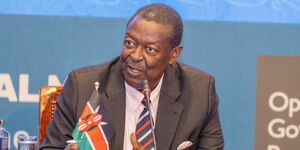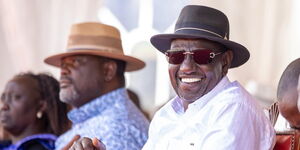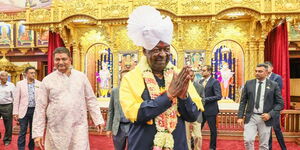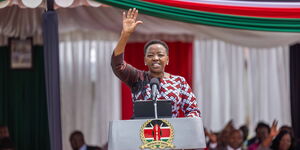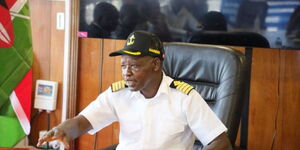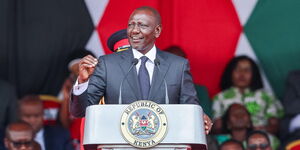He was knows as Cardinal Robert Prevost before his election as the head of the Catholic Church and the bishop of Rome.
However, as he takes office, to succeed the late Pope Francis who died recently, the 68-year-old American will not be referred to as Pope Robert Prevost. He will henceforth be known as Pope Leo XIV, a name he picked after the conclave settled on him on Thursday.
Yet, this is not a new occurence. Many past popes changed their names upon their election. Out of the 267 popes the Catholic church has had to date, at least 129 of them droped their original names.
The custom of adopting a new name upon assuming the papacy dates back to the sixth century. The first recorded case was that of Pope John II, whose birth name was Mercury, after the Roman god. Considering it is inappropriate to bear a pagan name as the leader of the church, he change it to John II, marking the beginning of this tradition.
The choice of a papal name is a tradition steeped in symbolism and meaning in the Catholic Church. Although in pontiffs retained their baptismal names in early centuries, this practice has evolved, allowing each new Pope to select a name that reflects his mission, inspiration, or the legacy he wishes to continue.
The practice of changing one’s name has its roots in the Bible. It was common for God to change the names of people to whom He entrusted a special mission, as in the cases of Abram whose name would become Abraham and Simon whose name was changed to Peter.
Change of names by Popes symbolised a transformation and a new purpose in the individual's life. Similarly, by choosing a new name, the Pope signals the beginning of a new stage in his life and in the direction of the church.
While there are no written rules or official criteria for a Pope’s name, newly-elected pontiffs must choose names that have deep meaning in the Catholic tradition.
While many often choose the same name as their immediate or recent predecessor out of respect, admiration, or recognition, others choose a different name, sometimes signifying a commitment to innovation and change. This was epitomised by Pope Francis, the first Pope in history to take the name of the Saint of Assisi.
Overall, the reasons behind the choice of a specific name vary. Some Popes choose to honour their predecessors or saints they admire.
So, when American Cardinal Prevost was selected as the new Pope on Thursday, May 8, it was not surprising to see him change his name to Pope Leo XIV. Notably, the name Leo has been chosen 13 times before.
The first pontiff to go by the name Leo was Pope Leo the Great, also known as Pope Leo I. He served as Pope from 441 to 661 AD. He is famous for meeting with Attila the Hun and dissuading him from attacking Rome. This might mean the new Pope will be instrumental in standing up against the oppressive forces of the world.
'Leo I' was also known as a great intellectual and theological reformer. He wrote Leo's Tome, a document that influenced the official doctrine defining Jesus Christ as both fully human and fully divine. The new pontiff, Pope Leo XIV, holds a doctorate in canon law.
Prevost’s choice of the name Leo might have also been inspired by the last Pope to use it, Pope Leo XIII, who headed the Catholic Church between 1878 and 1903.
He is perhaps most famous for writing the Rerum Novarum, which translates to "On New Things," but the Latin meaning is also "On Revolutionary Changes."
The Rerum Novarum addressed workers' rights and capitalism at the dawn of the industrial age and is considered the first Catholic social encyclical, laying the foundation for modern Catholic social thought.
This could indicate that Pope Leo XIV is interested in promoting Catholic social teaching in today's world.
Also, the name Leo is a deep sign of commitment to social issues. Because of that, Pope Leo XIV's choice of name also suggests a continuation of much of Pope Francis' ministry. Concurrently,
In his first words as Pope, Leo XIV spoke fondly of his predecessor, Francis. "We still hear in our ears the weak but always courageous voice of Pope Francis, who blessed us," he said.
All in all, in the history of the Papacy, the most commonly used name has been John (23 times), first chosen in 523 by Saint John I, Pope and martyr. The last Pope to choose this name was Italian Angelo Giuseppe Roncalli, elected Pope John XXIII in 1958, who was proclaimed Saint by Pope Francis in 2014.
Other frequently used names include Gregory (16 times), in honour of Pope Gregory I, commonly known as Saint Gregory the Great (590-604), which was last used by Gregory XVI in 1831, and Benedict which was chosen 16 times, including by Joseph Ratzinger in 2005.
Other commonly used names are Clement (14) Leo (14), Innocent (13) and Pius (12). Notably, not every pope in history has changed his name. Out of 266 popes before Pope Leo XIV, 129 have chosen new names. However, the majority of those who did not change their names came before the 11th century.
For many centuries, new Popes tended to choose the name of the pope who had elevated them to cardinal. Only starting in the mid-20th century did new Popes begin to choose names signaling the aim of their papacy, Regoli said.
Another notable trend in choosing one’s papal name is selecting a double name. The first Pope to adopt a double name was Albino Luciani in 1978, who became John Paul I, emphasizing continuity with the pontificates of John XXIII and Paul VI. His successor, Karol Wojtyła, repeated this choice as John Paul II.
Among the names never chosen by a Pope are Joseph, James, Andrew, and Luke. No Pope has ever chosen the name Peter, out of reverence for the first Pope.

